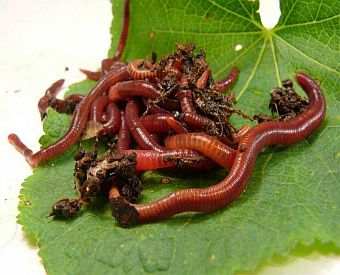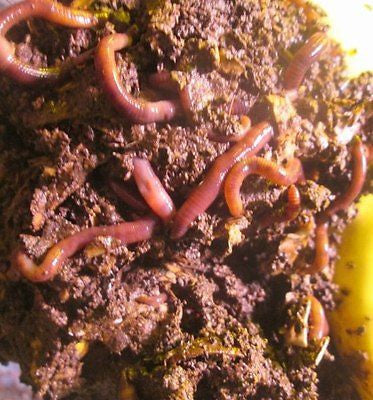Red wigglers: Top sources for purchase
Red wigglers: Top sources for purchase
Blog Article
The Role of Red Wigglers in Sustainable Horticulture
The combination of red wigglers right into lasting horticulture techniques provides an engaging approach to improving dirt health and minimizing natural waste. The implications of utilizing red wigglers extend past simple composting; their function in forming an extra lasting future warrants a much deeper expedition of their advantages and sensible applications.
Understanding Red Wigglers
Red wigglers, clinically recognized as Eisenia fetida, are a types of earthworm renowned for their duty in lasting horticulture and composting techniques - red wigglers. These worms grow in decaying raw material, making them especially efficient in transforming cooking area scraps and yard waste right into nutrient-rich compost. Unlike conventional earthworms, red wigglers have a greater tolerance for differing moisture degrees and can flourish in environments with abundant organic product
(Where To Buy Worms In North Carolina)Characteristically, red wigglers are smaller sized than their earthworm counterparts, generally determining between 3 to 4 inches in size. They have a reddish-brown coloration and have a segmented body structure that aids in their burrowing and feeding activities. These organisms are hermaphroditic, meaning each individual has both male and female reproductive body organs, which enables reliable populace growth under optimum conditions.
The environment choices of red wigglers include moist, dark settings abundant in natural web content, such as garden compost containers or worm ranches. Their ecological function extends beyond composting; they are integral in aerating the dirt and assisting in nutrient biking, which inevitably adds to much healthier yard ecological communities. red wigglers. Comprehending the biology and habits of red wigglers is crucial for those seeking to carry out efficient vermicomposting in lasting gardening
Advantages of Vermicomposting
Vermicomposting offers many advantages that improve lasting horticulture practices and add to environmental health. Among the key benefits is the improvement of organic waste into nutrient-rich compost, which improves soil framework and fertility. The castings created by red wigglers are packed with helpful microorganisms and necessary nutrients, making them an outstanding all-natural plant food.
Furthermore, vermicomposting considerably decreases land fill waste. By drawing away cooking area scraps and yard waste from garbage dumps, this technique not only minimizes methane discharges-- a potent greenhouse gas-- however likewise promotes a circular economic situation, where waste is repurposed as a resource.
One more advantage is the enhancement of dirt oygenation and water drainage (red wigglers). The burrowing task of red wigglers develops channels in the dirt, enabling air and water to penetrate even more conveniently, hence fostering a healthier origin system for plants
In addition, vermicomposting can be done on a tiny scale, making it obtainable for urban gardeners and those with limited area. This approach motivates ecological stewardship and recognition, as individuals end up being much more involved with their waste management practices. Ultimately, vermicomposting represents a sustainable, effective, and environment-friendly strategy to horticulture that profits both plants and the planet.
How to Begin Vermicomposting
Beginning your very own vermicomposting system can be a satisfying venture that boosts your lasting horticulture techniques. To begin, choose a suitable container, such as a plastic container or wood box, with great drain and ventilation. The dimension will depend upon you can try these out the volume of cooking area scraps you produce; a container of 10-14 gallons normally is adequate for a household.
Following, prepare the bed linen material. Shredded newspaper, cardboard, and coconut coir are outstanding alternatives, offering a comfy environment for the red wigglers. Goal for a bed linens depth of concerning 4-6 inches, which need to be moist but not soaked.
Once the bed linens is developed, present your worms. Red wigglers (Eisenia fetida) are one of the most appropriate for composting. Start with about one extra pound of worms for every single 2-3 extra pounds of kitchen scraps weekly.
Begin including kitchen area waste, preventing meat, milk, and oily foods, as these can bring in parasites and produce smells. Frequently monitor the bin's moisture levels and temperature, guaranteeing it remains within the perfect range for worm activity. With these initial actions, you'll be well on your means to creating nutrient-rich garden compost for your yard.
Preserving a Healthy And Balanced Worm Container
A flourishing worm container requires regular care and attention to keep an optimum atmosphere for the red wigglers. Key elements to check consist of moisture levels, temperature level, and food supply. Preserving a dampness level similar to a wrung-out sponge is vital; way too much water can bring about anaerobic conditions, while also little can dehydrate the worms.
Temperature is additionally essential, as red wigglers flourish in a variety of 55 to 77 levels Fahrenheit. Extreme temperatures can emphasize the worms, potentially resulting in mortality. As a result, positioning the container in a climate-controlled location or using insulating materials can help control temperature fluctuations.

Finally, oygenation is essential. Regularly transforming the bedding and using a fork or shovel can prevent compaction and advertise air flow, making sure a healthy and balanced, successful atmosphere for the red wigglers. By adhering to these methods, garden enthusiasts can keep an efficient worm container that sustains lasting horticulture efforts.
Effect on Dirt Health And Wellness
Enhancing soil wellness with the usage of red wigglers is an essential aspect of sustainable gardening. By eating organic matter, red wigglers break down complicated materials into less complex compounds, a procedure understood as vermicomposting.

(red wiggler compost bin)Researches have actually shown that soils improved with worm spreadings exhibit boosted microbial task and improved fertility, resulting in greater plant returns. By incorporating red wigglers into horticulture techniques, garden enthusiasts not only enrich their soil however additionally contribute to a more sustainable agricultural system, stressing the interconnectedness of dirt wellness and environmental stewardship.

Verdict
In conclusion, red wigglers dramatically add to sustainable horticulture with their efficient vermicomposting practices. By advertising waste reduction and fostering a round economic situation, red wigglers emerge as crucial parts in eco-friendly horticulture campaigns, emphasizing their essential function in environmental sustainability.
Report this page